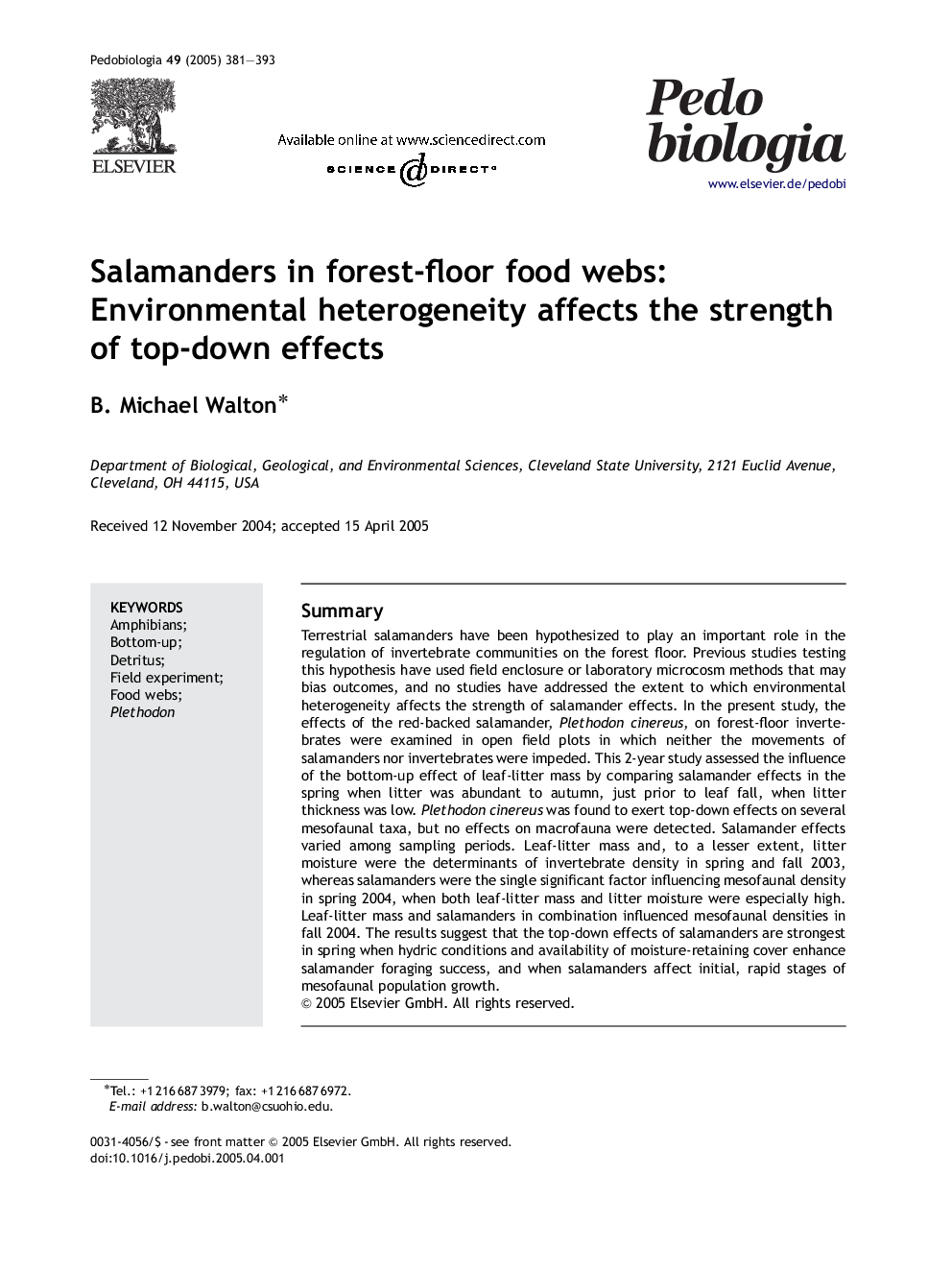| Article ID | Journal | Published Year | Pages | File Type |
|---|---|---|---|---|
| 10878706 | Pedobiologia | 2005 | 13 Pages |
Abstract
Terrestrial salamanders have been hypothesized to play an important role in the regulation of invertebrate communities on the forest floor. Previous studies testing this hypothesis have used field enclosure or laboratory microcosm methods that may bias outcomes, and no studies have addressed the extent to which environmental heterogeneity affects the strength of salamander effects. In the present study, the effects of the red-backed salamander, Plethodon cinereus, on forest-floor invertebrates were examined in open field plots in which neither the movements of salamanders nor invertebrates were impeded. This 2-year study assessed the influence of the bottom-up effect of leaf-litter mass by comparing salamander effects in the spring when litter was abundant to autumn, just prior to leaf fall, when litter thickness was low. Plethodon cinereus was found to exert top-down effects on several mesofaunal taxa, but no effects on macrofauna were detected. Salamander effects varied among sampling periods. Leaf-litter mass and, to a lesser extent, litter moisture were the determinants of invertebrate density in spring and fall 2003, whereas salamanders were the single significant factor influencing mesofaunal density in spring 2004, when both leaf-litter mass and litter moisture were especially high. Leaf-litter mass and salamanders in combination influenced mesofaunal densities in fall 2004. The results suggest that the top-down effects of salamanders are strongest in spring when hydric conditions and availability of moisture-retaining cover enhance salamander foraging success, and when salamanders affect initial, rapid stages of mesofaunal population growth.
Related Topics
Life Sciences
Agricultural and Biological Sciences
Animal Science and Zoology
Authors
B. Michael Walton,
